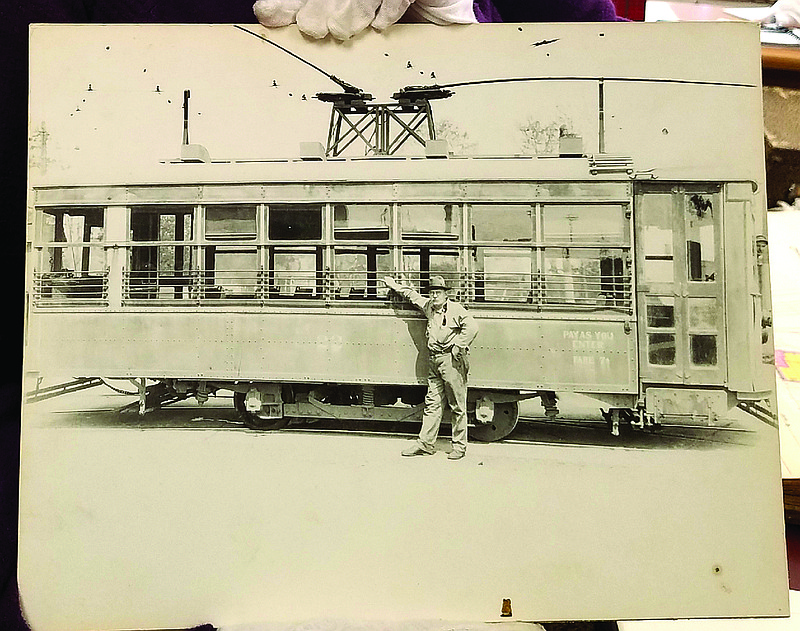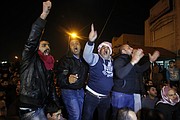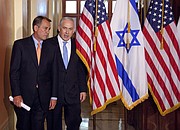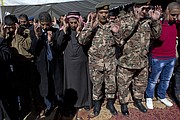TEXARKANA - When Texarkana was a young, on-the-grow city, the streetcar system helped residents manage that expansion by connecting people to destinations all across the cities.
A Gazette newspaper article from the early 20th century put it this way in the caption for a trolley car photo: "Tracks were laid and a comprehensive system of public transportation instituted by the Texarkana Gas and Electric Company in the early years of the city. Automobiles were not yet available in sufficient numbers to transport the people yet the city had grown to the point that distances made waking inconvenient. The primary schools, churches, and businesses were connected to the housing areas by the trolley system."
Drawn up and down the streets by mules, those early streetcars connected a bustling downtown to parks and other points where people needed to go. Streetcars operated here as an early form of public transportation before buses arrived and transformed the commuter landscape.
Dr. Beverly Rowe, proprietor at the Lindsey Railroad Museum and a history professor at Texarkana College, recently spoke about the streetcar system during a 1st Thursday at the Museum talk.
Though interesting, the history of Texarkana streetcars is convoluted, she said, and involves "many national entrepreneurs-slash-crooks," plus the plethora of streetcar systems Texarkana had.
"You would be surprised at how many we had because we're such a small place, and it was just very, very interesting history," Rowe said. This history runs from around 1880 to 1934. Texarkana was still in its infancy after railroad companies selling town lots started it all over the winter of 1873 and '74.
"The streetcar system came a little bit after that, and it covered the town initially for 7 cents a ride," Rowe said, "and then when they got uppity it was 15 cents."
People discussed riding the streetcars in the same way we may talk about going for a drive in our cars, she explained.
"It was entertainment. It was, 'I've got 7 cents, let's go ride the streetcar,'" she said. "You could see all of town. We had so many different lines so you could go everywhere in town. It was really a fairly sophisticated system for our town."
Referencing a postcard that showed West Broad Street busy with foot traffic, Rowe remarked on the streetcar and plentiful awnings - "look at the number of people downtown, oh my goodness." Saturday was the day to come downtown to shop and socialize. Folks may have come in their trucks, but they'd also ride the trolley to the city's central business district and participate in this rite of passage.
But as Rowe points out, Texarkana's trolley story also included places like Whitley Park, now a subdivision. "Early Texarkana people loved green spaces, so throughout we had little parks," she said. Scattered all over, some were large and others were the size of a ball field. Named for a contractor who helped usher in the trolley era here, Whitley Park had a bicycle track.
"And it was one of the most popular of the parks here," Rowe said. Early business people here decided public transportation should go there, so they created the Texarkana Street Railway Company, the first of many names for the trolley system.
"We had these two little mules, and they lived down at the mule barn," Rowe said of the critters who pulled the trolley - when they were in the mood. Added Rowe, "Those little mules used to get crucified in the newspapers because just about the time people were counting on them to get from point A to point B, they would sit down and didn't want to go."
The route started at 14th Street and County Avenue, then went to Broad Street, headed west to Maple (original name for what's now Texas Boulevard), then went northwest to 14th Street, whereupon it headed west to the Kansas City Southern tracks and Whitley Park.
Eventually, George Baumhoff received a franchise to run an electric streetcar company in 1890. He purchased Frank Whitley's system and began development of his electric system, Rowe said. He couldn't develop it, though, because he ran out of money and in the early 1900s forfeited his franchise.
The story of streetcars in Texarkana includes intriguing people like Benjamin Foreman, who built downtown structures during the streetcar era like the Rialto Building now located near the Hotel Grim, edifices that repeated certain architectural elements, said Rowe. "They were all built between 1895 and 1903," she said.
Even Thomas Edison figures into it all because of the long-lasting light bulb. "He didn't give us electricity, he didn't give us a lot of other things, but he did figure out what would work in a light bulb. He also was very interested in electric generation," Rowe said. Downtown lights, thus, became part of what Edison studied.
Or there's Charles Medill, who made money by buying regional monopolies, utility companies, all over, Rowe said. "When you think streetcar system, you probably never thought about ice plants, electric service. Those three run together: streetcars, electricity and ice," Rowe said.
Eventually, Southwestern Gas and Electric (what's now SWEPCO) ran the trolley system until 1934. Six streetcar lines served the Texarkana citizenry: Buchanan, Rose Hill, State (Main Street), Hazel, County Avenue and College Hill. Rowe estimates about 80 percent of the city was covered by these routes.
Trolleys were built at a facility on East Broad Street - both open-sided and closed-sided cars, both single truck and double truck cars. The streetcar barn is still there with the tracks going in and out of the building.
Talking about a streetcar's interior appearance, Rowe said, "On the upper level there, advertisers sold plaque space. When I first rode buses in Denver, they had these advertisements in the same general area, and so that's what they're doing here. Right next to each seat is a buzzer, so if you wanted to get off you rang your buzzer and you would get off at the next appointed place to stop."
Streetcars here didn't have a turnaround, so when it got to the end of the line the seats were flipped to face the correct way, the driver starting back along the route from the other end of the car.
"Very efficient," Rowe said. About 30 people could fit in a streetcar, passengers arranged in double seats that were either cane back or solid wood.
The demise of Texarkana streetcars came with the buses, providing a more efficient mode of public transportation. Automobile access also became more plentiful. At the Texarkana Museums System's Museum of Regional History, old photographs, news clippings and maps from the period show the trolley in its heyday and then its fall from favor.
Jamie Simmons, curator for the MoRH and the Texarkana Museums System, points out the trolley operated here more than half a decade, starting in 1881 with dirt streets and those mules. Electrical lines ran overhead, and signs inside showed that Texarkana streetcars were segregated. Signs marked "Colored" indicated where African American riders would sit.
For children, hanging on to those mule-drawn and electricity-driven trolleys was a pastime, but eventually such fun disappeared, swallowed up by the need for change.
"In 1934, the trolley car system pretty much was stopped and they transitioned to buses," Simmons said.




